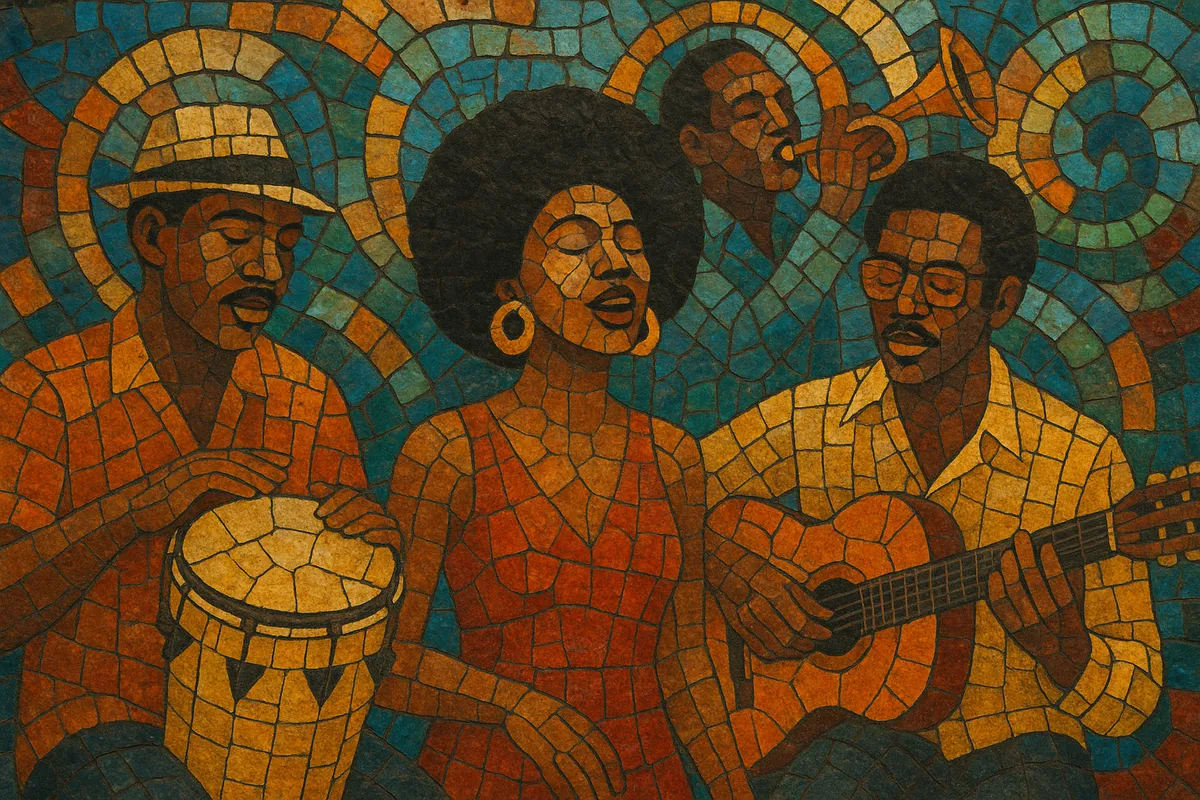Samba soul is a Brazilian fusion that blends the rhythmic foundation of samba with the harmonies, grooves, and vocal stylings of 1960s and 1970s American soul and R&B. It favors syncopated samba percussion under a backbeat-oriented drum kit, melodic electric bass, jazzy extended chords, and warm horn and Rhodes/organ textures.
Emerging in urban centers like Rio de Janeiro and São Paulo, samba soul connected Afro-Brazilian samba traditions with global Black music currents. The result is a danceable yet smooth sound, often romantic, optimistic, and rooted in everyday Brazilian life and identity.
Samba soul took shape in Brazil during the late 1960s as musicians began to combine the percussive swing of samba with the melodic sensibility and backbeat of American soul and R&B. Early bossa nova’s harmonic language and MPB’s songwriter focus provided additional tools, while local dance halls and radio helped disseminate imported soul, Motown, and funk records.
The genre flourished in the early 1970s alongside the Black Rio movement, which celebrated Afro-diasporic music and identity. Artists such as Tim Maia, Cassiano, and Hyldon crafted soulful Portuguese-language songs with lush arrangements, tight horn sections, and deep grooves. Jorge Ben’s output of the period, while often labeled samba-rock, frequently crossed into samba-soul territory through its chord voicings, rhythms, and vocal phrasing. Bands like Banda Black Rio integrated funk, jazz, and samba, broadening the palette and dancefloor appeal.
By the 1980s, samba soul’s harmonic and vocal aesthetics filtered into Brazilian pop, MPB, and romantic pagode, and its grooves influenced later samba-funk and urban styles. The genre experienced periodic revivals through crate-digging, reissues, and sampling by DJs and hip-hop/R&B producers. Today, its DNA is audible in Brazilian neo-soul and contemporary MPB, and classic tracks remain staples for dancers and collectors worldwide.


